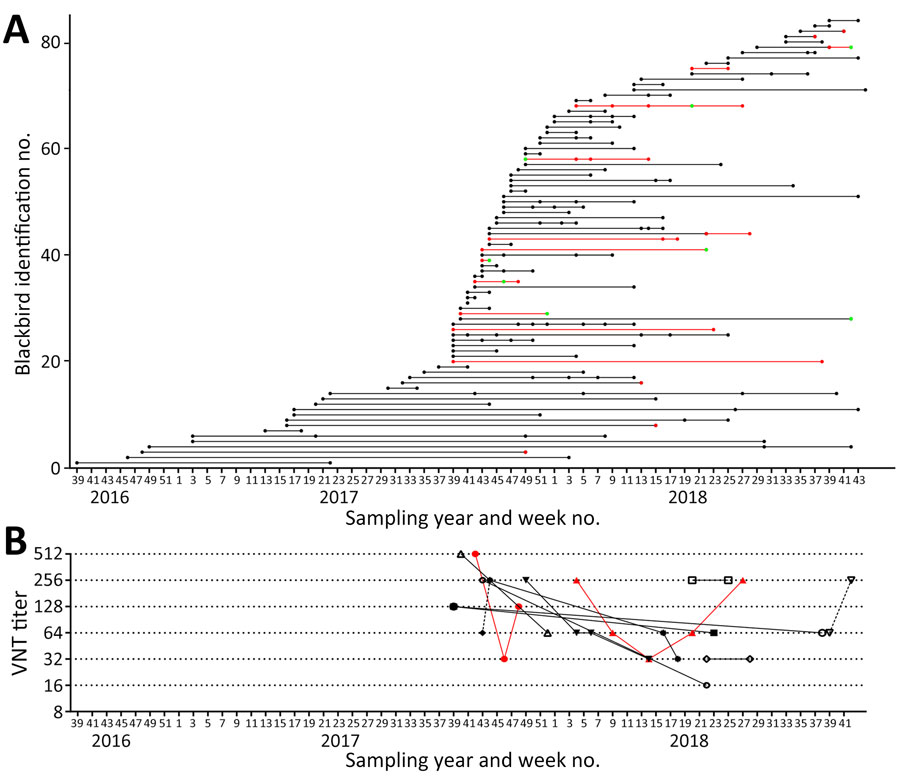Volume 31, Number 6—June 2025
Research Letter
Usutu Virus Antibody Dynamics in Naturally Infected Blackbirds, the Netherlands, 2016–2018
Figure

Figure. Longitudinal results for Usutu virus (USUV) serologic testing of serum samples from naturally study of USUV antibody dynamics in naturally infected blackbirds, the Netherlands, 2016–2018. Birds were recaptured and sampled >1 time. A) USUV seropositivity status for recaptured blackbirds that were sampled 2–9 times (n = 84). Left axis indicates individual blackbird identification numbers (1–84); dots represent moment of actual sampling; lines connecting sampling moments of each individual bird are supportive to figure interpretation and have no meaning. Black dots indicate seronegative by microarray; red dots, confirmed positive for USUV antibodies by microarray and comparative VNT USUV versus West Nile virus; green dots, confirmed positive for orthoflavivirus antibodies. B) Trends in USUV virus neutralization test titers in time for recaptured blackbirds that were seropositive >1 time (n = 11). Reciprocal antibody titers are shown. Red lines indicate birds that showed an increase in titer after an initial decline; black lines indicate birds that showed no kinetics or a decline in titer over time. VNT, virus neutralization test.
1Current affiliation: Faculty of Veterinary Medicine, Utrecht University, Utrecht, the Netherlands.
2Current affiliation: Centre for Infectious Disease Control, National Institute for Public Health and the Environment, Bilthoven, the Netherlands.
3These authors contributed equally to this article.